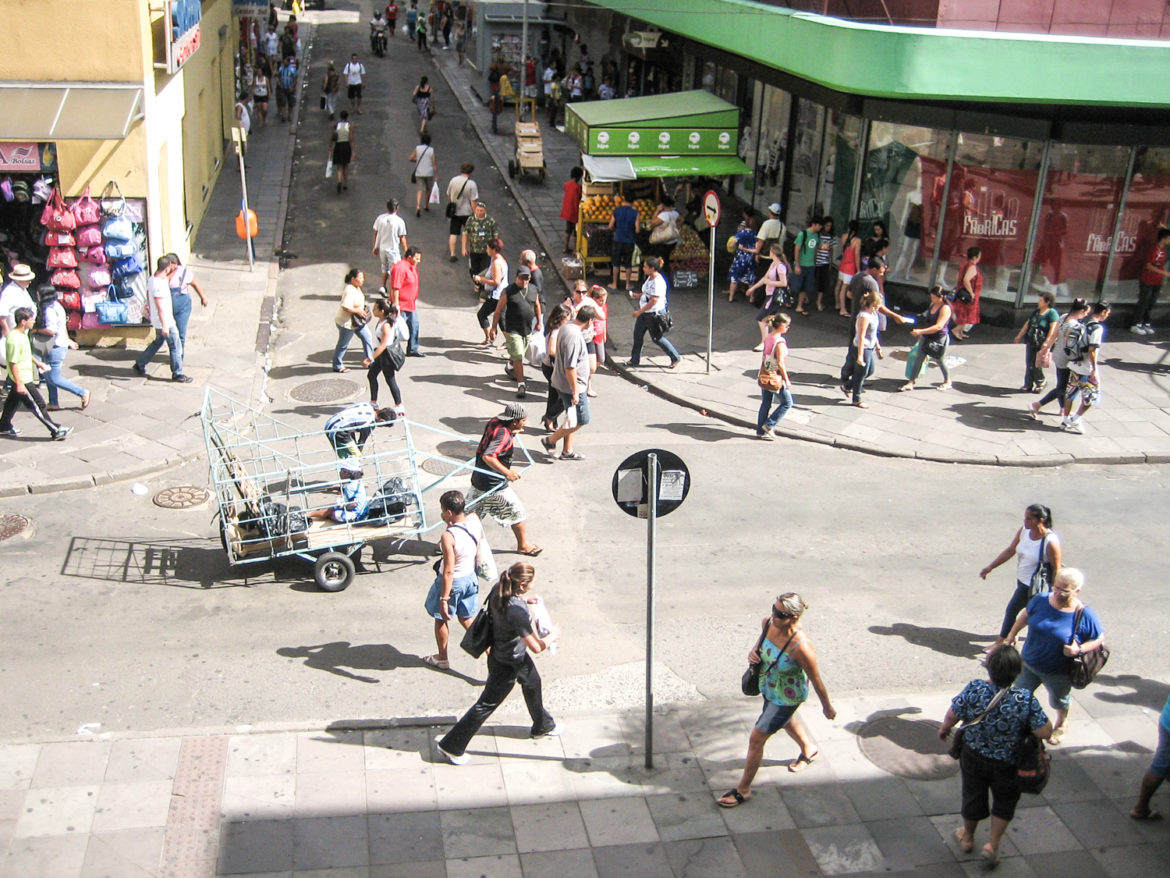Porto Alegre, the capital of Rio Grande do Sul, is southern Brazil’s commercial center and main transportation hub.
We passed through this bustling industrial city en route to the popular tourist site, Iguaçu Falls. An overnight bus took us from Montevideo (Uruguay) through the country’s famed beach resort town, Punta del Este.
From there, we travelled inland for a few hours. We made our way along the coastal drive past the Patos-Mirim Lagoon complex. This choked lagoon (the world’s largest) features a narrow inlet with an isthmus that keeps it separate from the Atlantic Ocean. Fifteen hours later, on the eastern bank of Guaiba Lake, we finally reached Porto Alegre.
Upon arrival in Brazil, we instantly noticed a distinct difference: a language barrier.
After months of steady Spanish practice in Peru, Bolivia, Argentina, Chile and Uruguay, we were back at ground zero in terms of communication. Brazil’s official language is Portuguese which originated in the Kingdom of Galicia (present day Iberian Peninsula) during the Middle Ages. Due to the area’s geographic isolation, the language evolved on its own. As a result, it has a unique sound compared to other Romance languages. In the 16th century, Portuguese explorers arrived, brining their nuanced language to an entirely new land mass.
Brazil is the only Portuguese-speaking country in South America. During our travels, we made sure to learn the important terms (hello, please, this, that, thank you). Still, it was a tough transitions. We went from being able to hold basic conversation to communication solely through hand gestures, nods and smiles.
Another immediate observation was the diversity of people.
For the first time in several months, we saw people of all skin tones. Many Brazilians believe their racially mixed national identity is more prominent than any country in the world. A true melting pot, it was the only place on our South American travels that on first glance, felt like were were in the United States.
During our less than 24-hour visit, we got a lay of the land by first heading to the Centro Historic. Hungry from the long bus trip, we stumbled on Chrusko’s. The Brazilian diner serves budget-friendly juices and snacks. We tried the beloved street food, the Brazilian Pastel, a deep fried dough pastry. Seems we can’t get away from tasty fried snacks in South America…
Wandering the historic district, we soaked up the vibrancy of Porto Alegre’s street life.
City workers in official orange uniforms cleaned the sidewalks, making them pristine for the abundant foot traffic. From the steps of the towering Our Lady of Sorrows Church, we watched the choreography of the bustling pedestrians below. Contemporary offices mix seamlessly with colorful neoclassical buildings. The hues are particularly striking against the Portuguese black and white pavement. This is a signature element of former Portuguese colonies that we first saw in Lisbon, on our first sabbatical.
We perused the Porto Alegre Public Market, the city’s oldest market and a popular meeting point for locals. The ground floor features numerous vendor stalls while the second floor offers seating for coffee shops, snack bars and restaurants. Continuing on, we strolled past an endless lineup of motorcycles (clearly a preferred method of transport) to Plaza Marechal Deodoro.
This square brings together some of the city’s most important landmark buildings from government (Piratini Palace) to religion (Metropolitan Cathedral) to art (Sao Pedro Theatre). At the center is an elaborate monument dedicated to Júlio de Castilhos, a Brazilian journalist and politician who’s considered the Patriarch of Rio Grande do Sul.
Alas, that’s as far as we got. We had to head back to the bus station and catch our second overnight bus in a row to our next destination: Iguaçu Falls.

